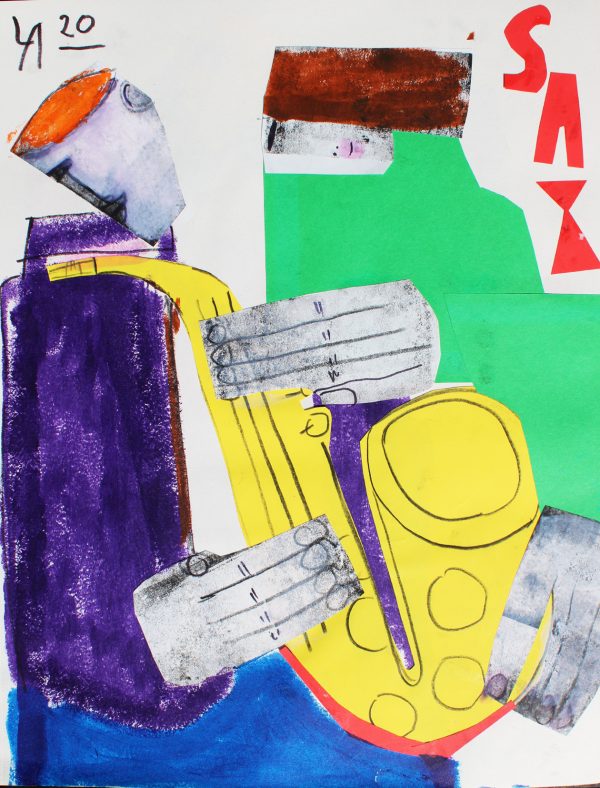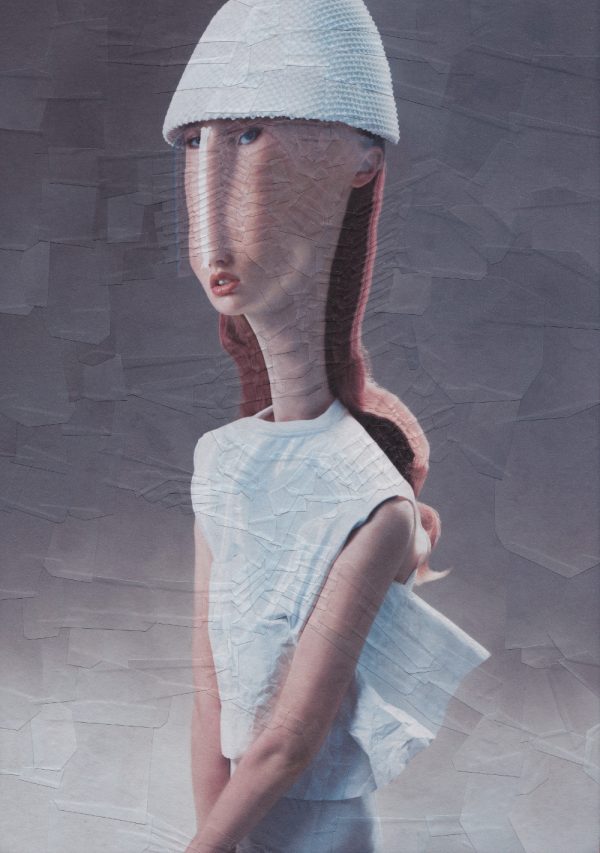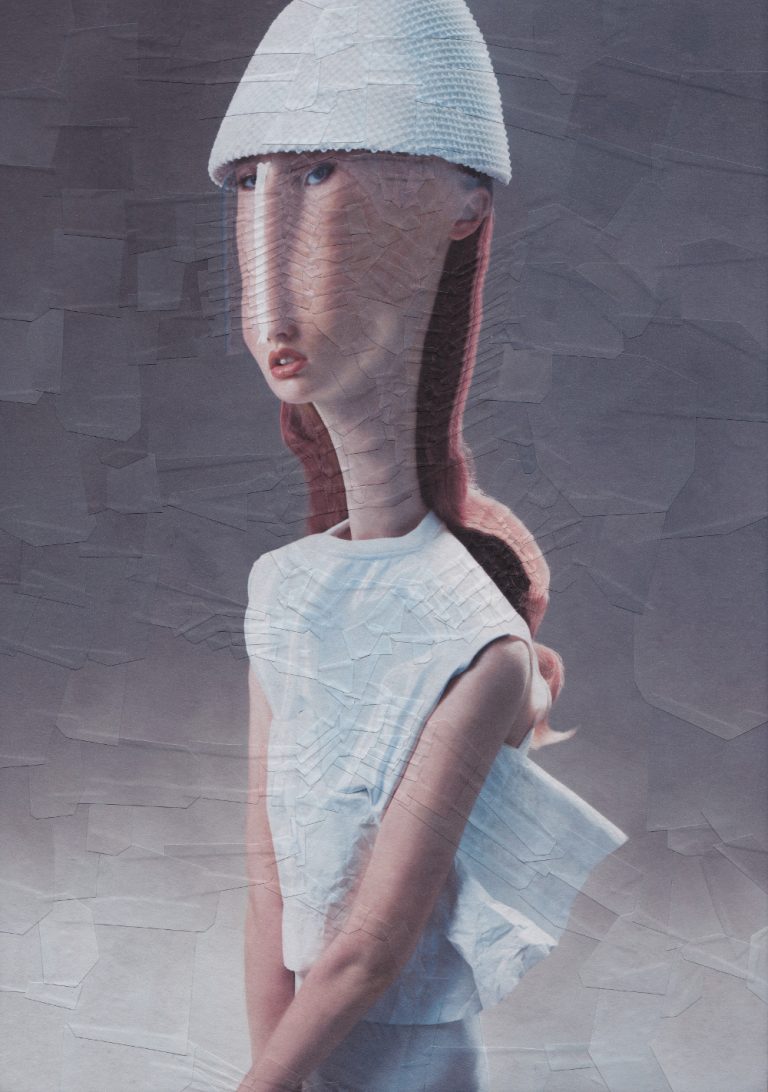“Collage is the cut, the tear, the rupture and the overlay of our contemporary culture. It is the hybrid language of urbanity — remixed, re-contextualized, and wholly built from the fragments of daily life.” – Pavel Zoubok
Collage has always been a favoured pastime of scrapbookers, but its art historical beginnings can be traced back to the early 20th century, when artists such as George Braque and Pablo Picasso utilised cut-and-paste techniques to create new, layered imageries. The arrival of collage was a break with the past which came to inspire a torrent of art movements. Cubists, futurists, Dadaists and surrealists alike all embraced the technique, setting the scene for conceptual artists like Marcel Duchamp, by questioning if high art could consist of found objects and existing materials.
Taking its name from the French word ‘coller’ (‘to glue’ or ‘to stick together’) collage generally refers to two-dimensional works created through an assemblage of different materials. For many early pioneers of the medium, it was a way to examine the shifting societal and technological changes brought about by modernism and urbanisation. Take Kurt Schwitters, for example, who made art from the debris of everyday life: newspapers, stamps, tickets, product packaging, and so on, to reflect the rapidly changing world. Today, the medium has been embraced by a new roster of artists and transformed through the use of digital technologies. In this article, we look at three contemporary artists using collage in distinct, innovative ways and offer some fun techniques inspired by their work to try for yourself.
Laslo Antal
In 2017, Laslo Antal began documenting the events of his daily life through collage, producing small, assemblage narratives each and every day. His small-scale collages, posted to his Instagram account, cover a vast range of themes and experiences, from profound and emotional, to banal and bizarre. Through these ‘visual diaries’, Antal examines the unreliability of memory. ‘If I don’t record my immediate experiences every day,’ he observes, ‘I’m afraid I might never be able to access those parts of myself again.’
For Antal, it seems, collage is a medium that allows not only for reconstruction and fragmentation, but also, paradoxically, for a type of preservation. Rejecting the readily available mass of printed material, he works exclusively from his own drawings and prints, proving that, in a digital age, returning to the haptic pleasures of cutting, ripping and pasting can be a fulfilling and affirming process.

Technique #1: Auto-collage
For a week, try recording your experiences through collage. Choose a consistent size to work within, and use only your own work as material. This could be photocopies of old sketches, bits of unfinished paintings, or intentional work made with collage in mind.
‘Wherever I go, I bring with me my 28 cm x 35 cm workbook and my materials, so that I can end every day with the practice of making my daily collage,’ notes Antal. Experiment with collecting your experiences in a notebook during the day to use that material later. Draw from a wide range of experiences — this can be as trivial as a funny remark made by a co-worker on a tea break, or as ruminative as your inner-most thoughts. With this material, try and piece together a narrative in unusual ways, using symbols and images as representations of sensations or dialogue.
Ria Patricia Röder
Between 1962 and 1964, Robert Rauschenberg, the enfant terrible of post-war American art, made a series of collage works that combined silkscreened photographic images from mass media with painted gestures. This technique functioned as a rudimentary ‘scanning’ process, which he later picked up in works of the 2000s, with the wide-spread arrival of computer technologies. Following in his footsteps, Berlin-based artist Ria Patricia Röder’s collage works mix analogue and digital technologies to create unique pictorial poems made with scanners. Referring to these works as ‘scanograms’, Röder uses her scanner to play with dimensionality, scanning both 2D and 3D objects side by side to produce a disorientating, unreal effect.
Technique #2: Scanograms
Collect objects and cuttings over a week to use for your own scanograms. These can be anything from lemons to newspaper advertisements, but make sure you have a mix of 2D and 3D material. Select things that have interesting dimensions, round objects for example, or flat images with lots of shadows. This will increase the scanning effects of focus and blur which add to the dream-like textures of the scanned image. Additionally, you could try selecting your objects in an associative way, and like Röder, create ‘pictorial poems’ with your scanograms.
Lola Dupré
At first glance, it’s easy to assume Lola Dupré’s collages are digital manipulations of photographic images, but upon closer inspection, the subtle ridges of paper reveal layers and layers of carefully hand placed cut-outs. Based near Glasgow, Scotland, Dupré’s work is visually intriguing and painstakingly detailed. Using tiny pieces of duplicated images, she re-composes her subjects to appear elongated and alien, often with multiple extra limbs or animalesque features. Sourcing images from magazines, photobooks as well as her own photos, her collage works are made with simple materials: scissors, paper, PVA glue. Through the use of traditional tools and nontraditional methods, Dupré combines a 20th-century Dada sensibility with a distinctly 21st-century aesthetic of digital manipulation.

Technique #3: Tactile manipulation
In the manner of Dupré, begin by sourcing portraits of subjects that visually interest you; these can be fashion models, political figures, people you know or even pets. Make around ten copies of the same image using a photocopier. With scissors and PVA glue, cut up your copied images and reconstruct them on a separate sheet of paper. Plan the look of your collage in advance, or let your intuition lead you to unexpected results. Think about how you can distort the original image in your copy — perhaps you’ll give your subject five pairs of eyes, or maybe you’ll widen the face and elongate the neck to create a DIY ‘filter’.







